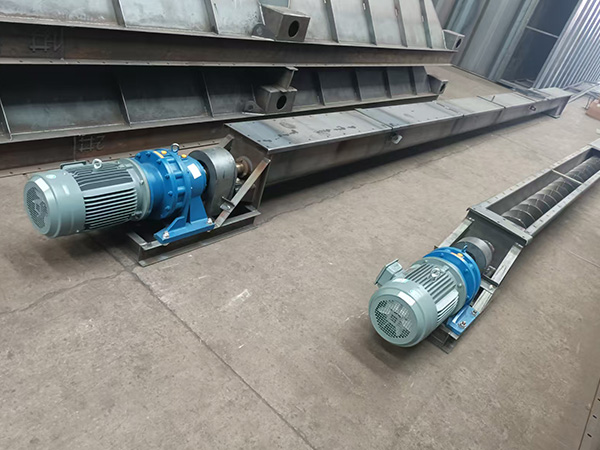-
All
-
bag Dust Collector
-
Electrostatic Precipitator
-
Cartridge Dust Collector
-
Desulfurization And Denitrification Equipment
-
Dust Collector Bag
-
Dust Collector Skeleton
-
Electromagnetic Pulse Valve
-
Rotary Valve
-
Screw Conveyor
-
Dust Conditioner
-
Plug Valve/Butterfly Valve
-
Scraper Conveyor
-
Catalytic Oxidizer
-
Cyclone Dust Collector
-
Sintered Plate Dust Collector
-
Spray Tower
-
Activated Carbon Adsorber
-
Light Oxygen Purifier
-
Dry Filter Box
-
Bucket Elevator

Screw Conveyor
Spiral conveyor is a widely used conveying equipment in chemical, building materials, grain and other sectors, mainly used for conveying powdery, granular and small block materials....
Spiral conveyor is a widely used conveying equipment in chemical, building materials, grain and other sectors, mainly used for conveying powdery, granular and small block materials. It is not suitable for conveying materials that are prone to deterioration, viscosity, and clumping.
The environmental temperature for the use of screw conveyors is -20 to 50 ℃; The material temperature is less than 200 ℃; The inclination angle of the conveyor is β ≤ 20 °; the conveying length is generally less than 40 meters, and the length does not exceed 70 meters.
Compared with other conveying equipment, screw conveyors have the advantages of simple structure, small cross-sectional size, good sealing performance, the ability to load and unload materials at multiple points in the middle, safe and convenient operation, and low manufacturing cost. The unloading point of a screw conveyor is due to severe wear and tear of the machine parts, low conveying capacity, high power consumption, and easy breakage of materials during transportation.
There are three types of spiral blades for screw conveyors: solid spiral surface type, belt spiral surface type, and blade spiral surface type. The solid spiral surface is called the S method, and its spiral pitch GX type is 0.8 times the diameter of the blade, suitable for conveying powdered and granular materials. Belt type helical surface, also known as D method, has a helical pitch equal to the diameter of the helical blades, and is suitable for conveying powdered and small materials. The blade type helical surface is rarely used and is mainly used for conveying materials with high viscosity and compressibility. During the conveying process, it completes mixing and other processes simultaneously, and its helical pitch is about 1.2 times the diameter of the helical blade.
Spiral conveyors are used to transport various wastes and filter residues generated in industrial production processes, grid output slag in urban water supply and drainage, and materials such as sludge cake in sludge dewatering.
Spiral conveyors are generally divided into two types: axial spiral conveyors and shaftless spiral conveyors. The axial screw conveyor consists of a screw, a U-shaped groove cover plate, inlet and outlet ports, and a driving device, while the shaftless screw conveyor changes the screw to a shaftless screw and installs a replaceable lining body in the U-shaped groove, with a simple structure. The materials are imported and then output through the outlet after being pushed by a screw. The entire process can be carried out in a sealed groove, reducing noise and minimizing the discharge of odors. Due to the absence of high-speed running parts in the equipment, the screw wear is low, the energy consumption of the equipment is low, and almost no maintenance is required.







